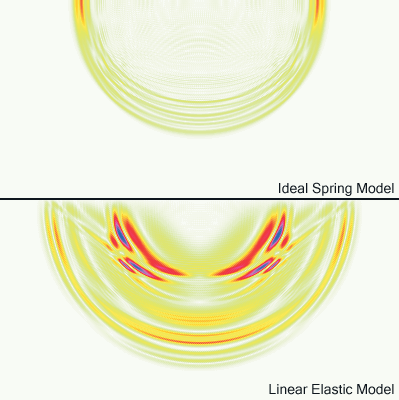Well, 2008 certainly flew by.January 11th, 2009
Wow, longer time since an update.
I swear, I had a pile of stuff I wanted to put up here. 2008 was rather eventful for me; Disease, heartbreak, money worries, romance, the works. "Real life" happenings were constantly taking my mind off of the old web site.
2008 was perhaps the most eventful year of my adult life. Nothing happened to me that was particularly unusual per se. It just happened within a such a short span of time. "Fear" is the word I'd use to sum up 2008 for me. It is an emotion that I became well aquatinted with last year. Fear of the unknown. Fear of rejection. Fear of losing my job. Fear of dying. 2008 was a year of unpleasant experiences and hard lessons.
Hopefully, 2009 will be a little less eventful and I can pay more attention to my poor, neglected web site.
The Reyes Image Rendering Architecture. Part One.January 21st, 2008
Wow, long time since an update.
I've started working on an introduction/tutorial about the Reyes rendering architecture. There are numerous tutorials covering ray tracing algorithms out there, but almost nothing about micropolygon renderers. Part one covering the first half of the algorithm along with source code is available now. More will follow soon... I hope.
Buddhabrot UpdateMay 9th, 2007
The Buddhabrot page has been updated with some information on extending the algorithm to three dimensions.
I've also been slowly working on a more advanced generator than the one currently available. I must emphasize the word slow. At least it's a break from slowly working on Starfish Prime, which seems to be stuck inside one of Zeno's dastardly paradoxes. I can make progress, but never enough to be done.
I really should just take a week off and get a demo out.
Interest of the weekMarch 9th, 2007
Yet another passing interest: Elastic waves. Elastic waves model how sound moves through solid materials like glass or steel.
A friend and I have lately been bouncing ideas back and forth about acoustic touch panels. Acoustic touch panels work by listening to the sound made when someone taps their finger on the glass, and working out where it is based on the recorded waveforms. We'd eventually like to try building one, but since neither of us currently have the time, I thought I'd whip up a little simulator. This way, we can at least get an idea of what kinds of algorithms would be best suited to analyze the sound waves.
A really basic way to model waves traveling through a material is to simulate a bunch of ideal springs connected together in a grid. It's not physically correct (unless you're trying to simulate ping-pong balls taped to each other with springs), but it makes for a damn fun program to play with.
The elastic wave equation isn't that much harder to implement than a simple ideal spring model and can simulate all kinds of crazy waves that I'd never even heard of until last Saturday. Have you ever wondered what the sound waves look like inside a gold-plated ball of uranium that's been hit with a hammer? Me neither, but I could simulate it if I wanted to.

 Offsite links
Offsite links
